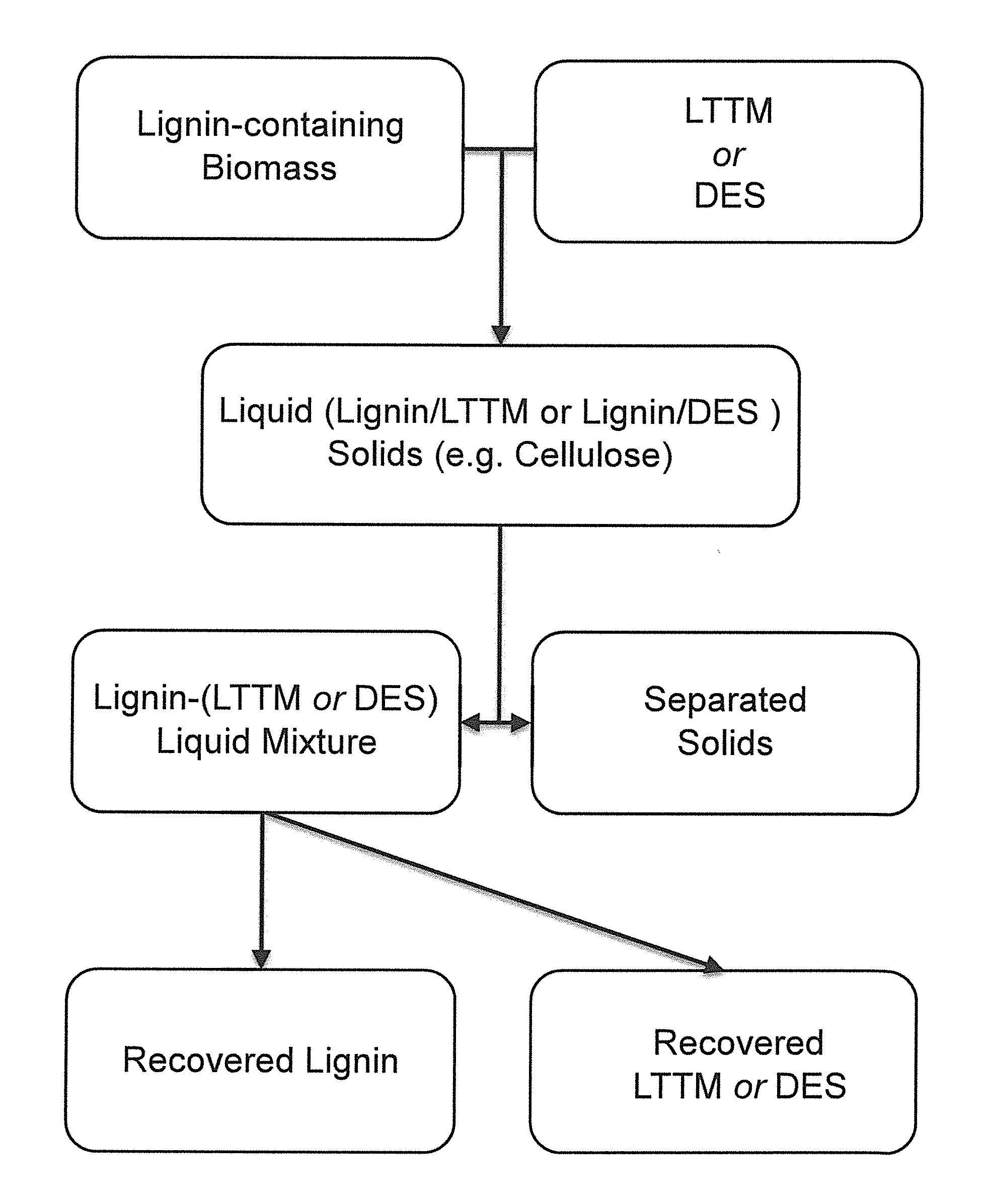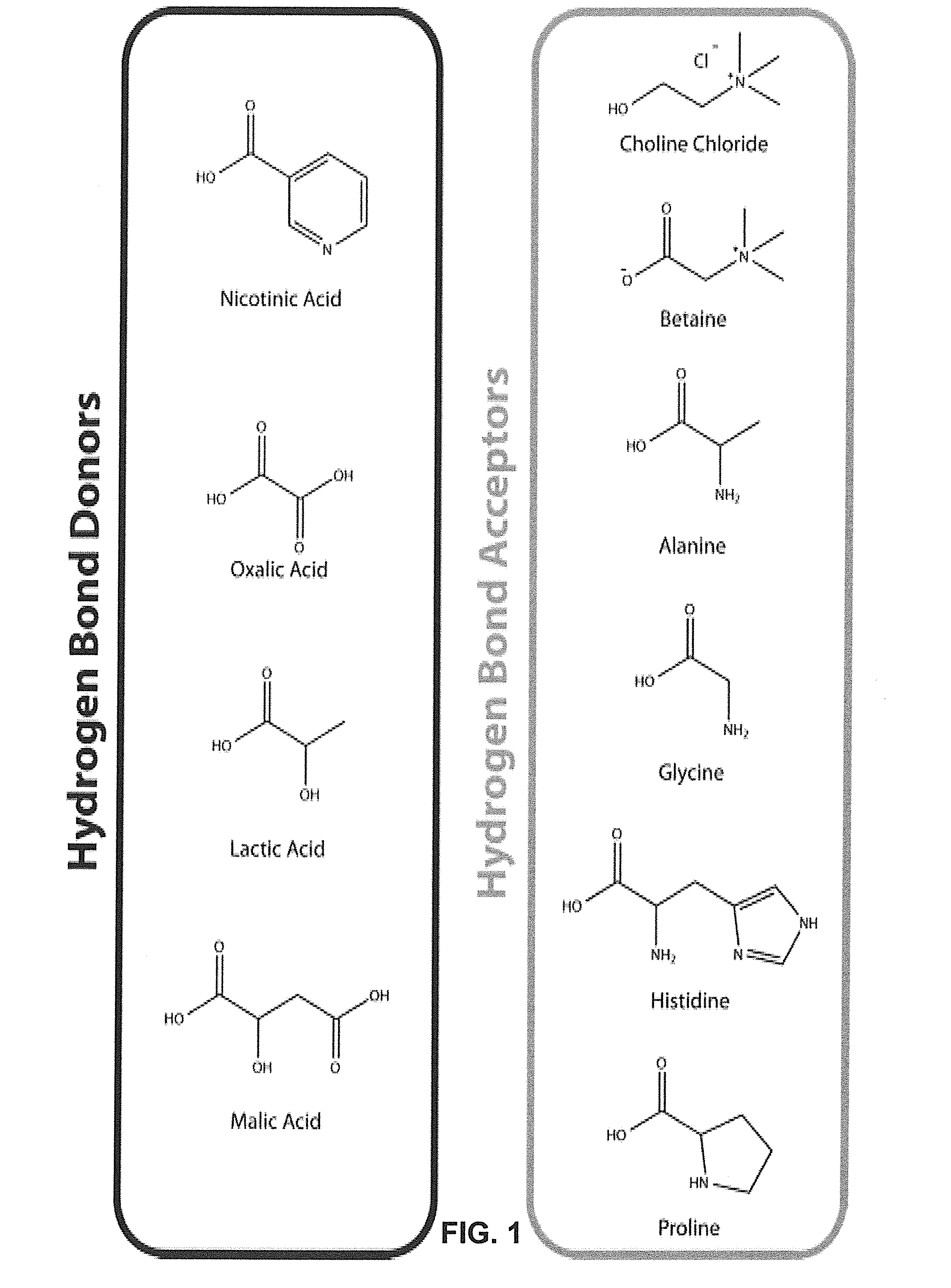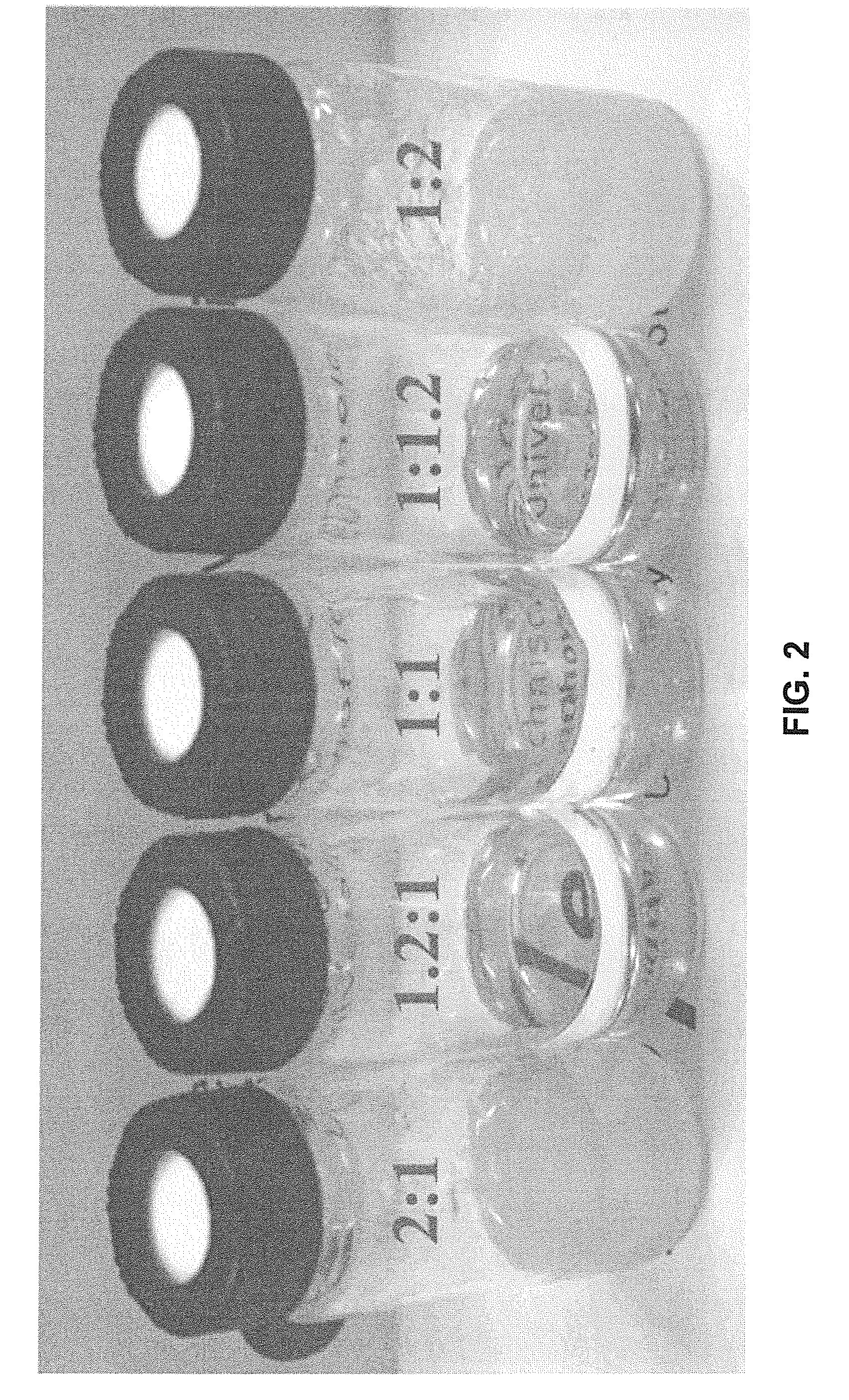Pretreatment of Lignocellulosic Biomass and Recovery of Substituents using Natural Deep Eutectic Solvents/Compound Mixtures with Low Transition Temperatures
a technology of deep eutectic solvents and lignocellulosic biomass, which is applied in the field of pretreatment of lignocellulosic biomass and recovery of substituents using natural deep eutectic solvents/compound mixtures with low transition temperatures, can solve the problems of undesired side reactions and the limitations of new il technologies for large-scale application in terms of recoverability and cos
- Summary
- Abstract
- Description
- Claims
- Application Information
AI Technical Summary
Benefits of technology
Problems solved by technology
Method used
Image
Examples
Embodiment Construction
[0033]In the present invention, new low transition temperature mixtures (LTTMs) are provided by combining natural and renewable biomaterials as shown in FIG. 1. For the purposes of this invention, LTTMs are also referred to as deep eutectic solvents (DESs). Originally, these mixtures were called DESs, but this name does not cover the complete class of solvents, because many mixtures do not show (eutectic) melting points, but glass transitions instead.
[0034]The selection of starting materials was made on the basis of the available functional groups and the key interactions involved in lignocellulosic biomass dissolution. A set of representative natural amino acids with suitable structures and functional groups, some essential nutrients represented by choline chloride and nicotinic acid, as well as different natural acids present in fruits and vegetables were tested as liquid-phase promoters. In one example, the preparation of the new solvents was done by mixing both starting material...
PUM
| Property | Measurement | Unit |
|---|---|---|
| temperature | aaaaa | aaaaa |
| temperature | aaaaa | aaaaa |
| temperature | aaaaa | aaaaa |
Abstract
Description
Claims
Application Information
 Login to View More
Login to View More - R&D
- Intellectual Property
- Life Sciences
- Materials
- Tech Scout
- Unparalleled Data Quality
- Higher Quality Content
- 60% Fewer Hallucinations
Browse by: Latest US Patents, China's latest patents, Technical Efficacy Thesaurus, Application Domain, Technology Topic, Popular Technical Reports.
© 2025 PatSnap. All rights reserved.Legal|Privacy policy|Modern Slavery Act Transparency Statement|Sitemap|About US| Contact US: help@patsnap.com



